The Peruvian / German artist Adriana Ciudad conducted a field research with the female singers of “alabaos” in Timbiquí, Colombia. Here a part of her chronicles currently showed in her solo exhibition “Salgan ríos de mis ojos” (Get out rivers of my eyes) at Galería El Museo in Bogota.
By Rodolfo Andaur | Images courtesy the artist | Translation: Sofía Rodríguez
“When a person beloved by the community dies, one feels like it is not only the family’s mourning but everyone’s. “
Nidia Góngora – Cantora (singer)
There are many and diverse ways we can deduce, investigate and rescue some social structures that should not be seen as separate from memory and should not become untethered from historical processes. In most cases, memory, and that which we define as cultural heritage needs to be seen in conjunction with the idea of history as a process. Therefore as we revisit certain traditions we reassign meaning and the functions of the present to insert new happenings, situations, and facts to that phenomenon we call cultural heritage. Is it memory which leads us to significantly construct our heritage?
The concept we have of heritage, its symbols and its convoluted patterns, in a constant state of construction, has been expanding in these past years into certain ideas that seek to redefine it. What can be shaped into heritage includes not only the inheritance of each people or village, not only specific cosmic visions but also the cultural accumulations that are recognized in a non-specific space and time. In this way, we are capable of evoking heritage as a social construct and we understand it as the scope of cultural negotiations that, coming from a collective disparity, strengthen the embroidery of our identities.
For all these reasons as we start an investigation project in the middle of the jungle, and as we wander and grapple with all these questions about the oral traditions of a community, we certainly come face to face with other meanings that the concept of heritage throws our way. As we face this cornucopia of queries, plus the multiplicity of elements that we observe in the Timbiquí, Cauca, region of Colombia, we could be capable of assigning a new meaning to the idea of starting a laboratory as a constitutive space that has as its principal object to unlock the intangible about the intrinsic value of a territory. As Garcia Canclini emphasizes “at this moment not only the material aspects of a locality are identified but also the immaterial ones” Having said that, we must also acknowledge that the specific dynamics of one locality and the ethnic conflicts that exist can lead us to question the role of an investigation that, in this case, needs to establish a symbiotic relationship with contemporary art.
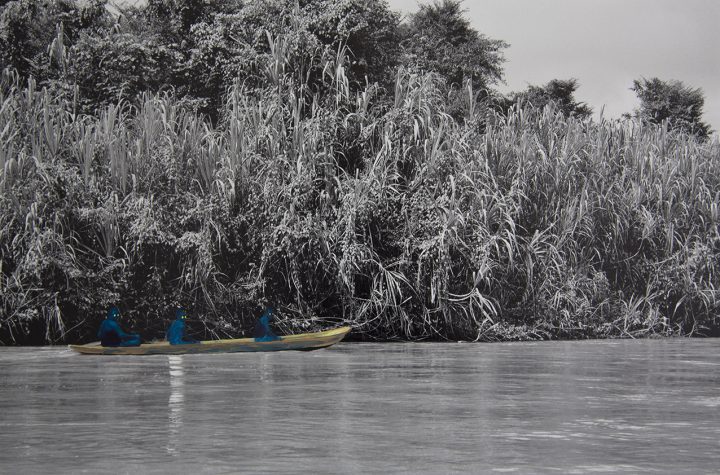

Facing off to this preliminary rethorics, the ethnographic introspection of the visual artist Adriana Ciudad and her connection, specifically with the “alabaos of Timbiquí” (which could be roughly translated as the devotions or ovations of Timbiquí), expands these meticulous sensitivities that we evoke stretching from the basis of anthropology and from paradigms of heritage, and also, it must be said, within a social context affected more and more by its many layers of hopelessness.
The “alabaos” are call and response songs with lyrics that evoke pain and grief but also encompass hope. In this sense, the society of Timbiquí coexists with death from within a cosmovision that has already been diagnosed by the unknown. It is worth mentioning that which the European conquerors had designated as evil – the rituals organized by slaves taken from Africa – is today the vibration that connects a whole community’s reality and Imaginarium with its deceased.
Every interpretation, visual and auditory translation, set up by this artist is a constant pilgrimage among the diverse esthetical playfulness that has cemented her own artistic work. Even so, these offerings are not only connected to imagery. A better way to describe them would be as an infinity of epiphanies that overflow temporalities when faced with the limits that nature knits around us.


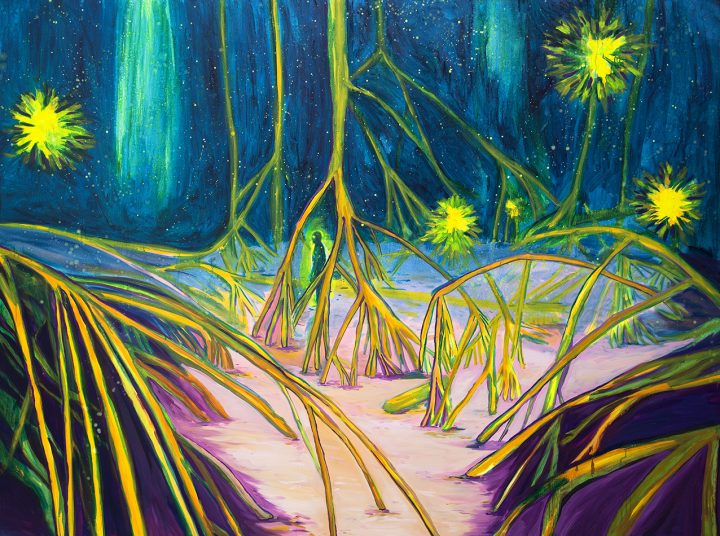
In these landscapes music is a fundamental platform for knowledge and it is here where the work of the “cantora” (singer) Nidia Góngora makes an appearance, as she presents to Adriana Ciudad the sounds and songs of Timbiquí that can be assembled with the innumerable voyages that together with other chronicles constitute the conservation of these rituals. Furthermore, another key part of this multidisciplinary group is C S Prince, who comes into this melange from the perspective of audiovisual ethnographics and who portrays events as they unfold in this singular analysis from a collaboration standpoint.
Adriana brings to life the essence, the nooks and crannies of Timbiquí, using a series of mediums, such as photography, installation, video, and painting, that have been emerging organically through the process of her collaboration and that mesh together to transport us to an immersive space of sounds, the body , and internalized heritage. At the same time, we feel like this created space is homologated with other previously constructed spaces. This arena also invites us to deepen our knowledge and empathy with this indeterminate marginalization that is the conceptual basis of the “alabaos”, and it confirms the feeling that the embroideries of sound and feeling generated by these “rezanderas” ( praying women) are not easily encompassed within a single theoretic or epistemological framework. Everything we see and hear here is derived from a hybridization of community practices together with the diverse memories imposed by the social environment.
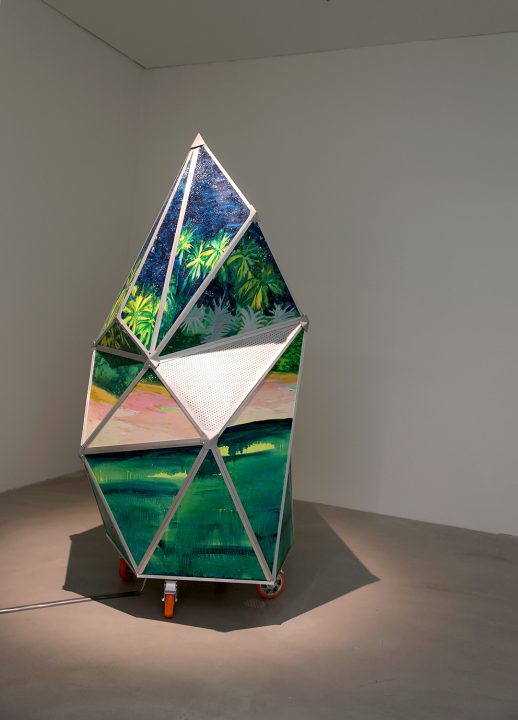
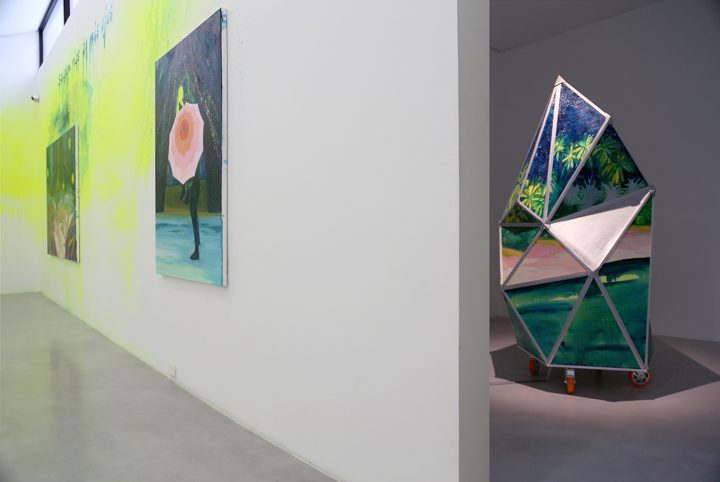
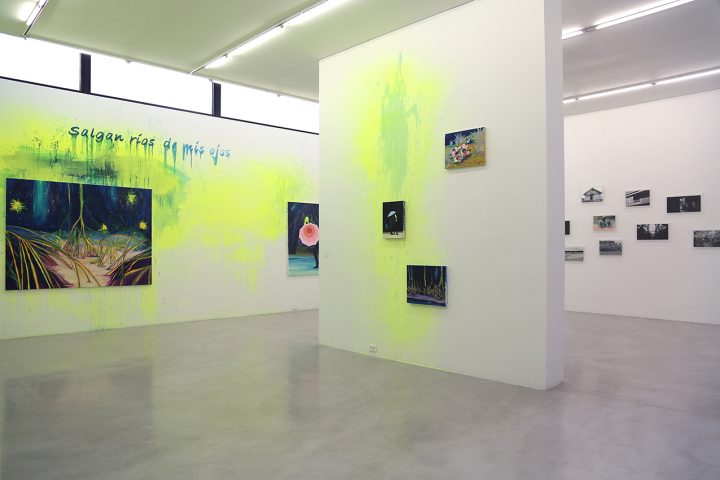
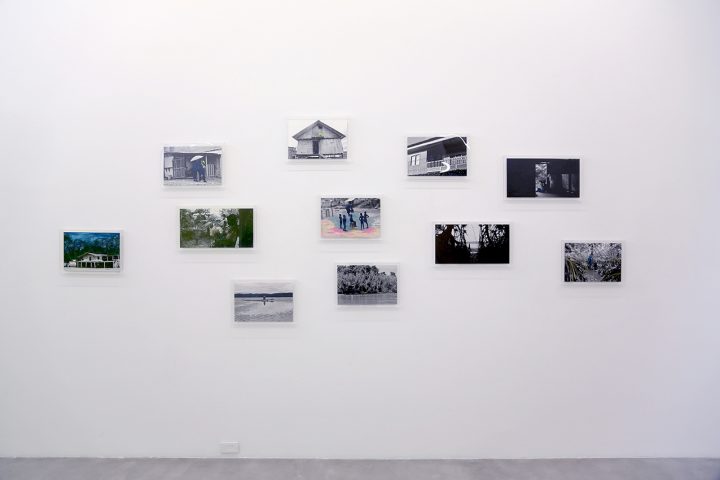
So it becomes indispensable, on the one hand, to remember that these “alabaos” give us a “before” and an “after” image of the communities, and , on the other hand, that they guide us to perceive the diverse complexities and problems that knit together this sung poetry, so burdened with an interesting collective wavelength and with the social and historical filiation of a people. Through these created spaces the “cantoras” and their “alabaos” have restructured the use of time and of the space that contains the ritual as distinctive elements of a cultural otherness circumscribed by grief and prayer. Or, as they themselves describe it: between “rezanderos” (the person who prays out loud at Catholic events) and “ánimas” (souls or ghosts). From across the street, this expository project by Adriana Ciudad has created and labeled an interesting, suggestive mode of fieldwork that combines several factors to frame what is still seen as a “work of art”. This also provokes a dialogue from a different starting point, in a different framework and breaking away from the underground image these rituals normally evoke among locals.
At first sight, this project generates a shift and a replacement within the aspects we normally consider a part of the Colombian jungle, the aspects we as outsiders like to browse through and convert into arbitrary concepts. It is worth citing here what the curator Claudia Segura wrote on the subject: “Starting from the interdisciplinary and artistic look at a grieving, reconciliation and reparation process that takes place post-conflict , this initiative resolves into a work that starts as symbolic but operates in the physical realm, and shows us how art can be a device for social transformation and political discourse.” [1] Without a doubt, the “alabaos” permit us to create a necessary space for community reflecting but also act as a narcotic to numb our pricking conscience in a violent present and an increasingly uncertain future. Within this humid jungle, the language of the “cánticos” (songs) is translatable among themselves and awaken other sensory emotions inside us who are not a part of these jungle expanses.
To summarize, these communities attempt to maintain a relationship with death, an interconnection that catapults other symbolic dimensions and dimensions of identity. Therefore it is imperative that we remember that these “alabaos” offer us a relentless before and after of community and that these same captured moments convey us to the different quandaries that construct the chronicles of a community. In this way, these songs, loaded with an interesting frequency, are without a doubt the social and historical filiation of the ancestral people of Timbiquí.
[1] SEGURA, Claudia “Una mirada artística al alabado”, this text was published in Arcadia Magazine, edition number 154, Bogotá, Colombia, page 23.

 Español
Español